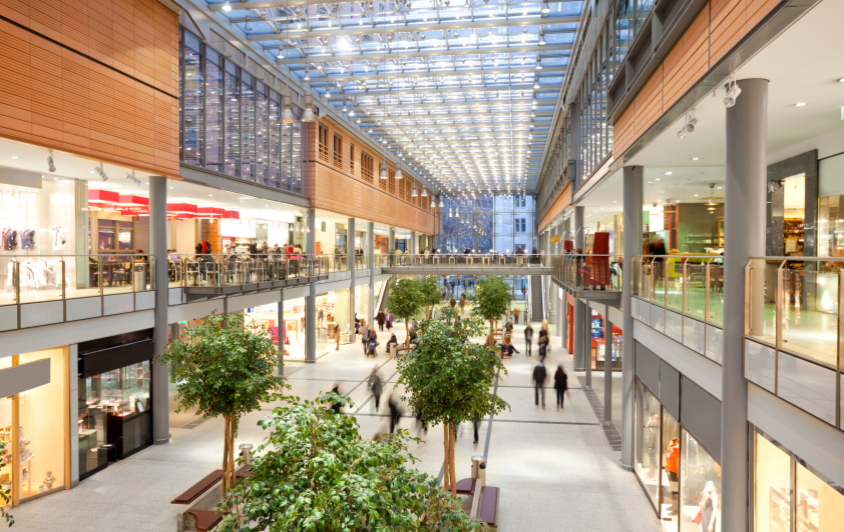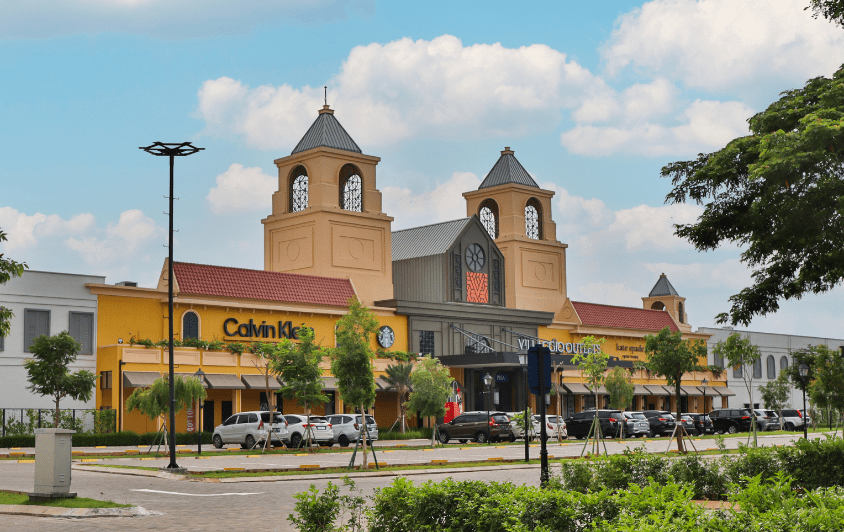This year’s MAPIC Conference highlighted many transformative themes that promise to reshape the retail industry in years to come. Among many interesting topics discussed at the event, four key themes stood out: Sustainability, Changing Customer Habits and the need for Mixed-Use Spaces, Gamification and Retail-tainment, and the Proptech Revolution with a focus on AI.
1. Sustainability Takes Center Stage
The resounding message from MAPIC 2023 was the undeniable importance of sustainability in the retail sector. The rise of sustainability data has become essential for malls aiming to reduce their environmental impact. From tracking energy consumption and footfall to monitoring CO2 emissions, having all this information consolidated in one data platform emerged as a powerful tool for informed decision-making.
Key Takeaways:
- Data Ecosystem Value: Creating a robust data ecosystem was emphasized as a crucial investment. This allows stakeholders to rebuild property knowledge, making it less vulnerable, more sustainable, and ultimately more profitable.
- Geolocation for Proactive Decision Making: Understanding the geolocation and ecological health of areas within your shopping mall was discussed extensively, focusing on understanding the impact of different functionalities on energy consumption and water usage. This knowledge enables landlords to make proactive decisions and support sustainable growth across their property while supporting retail tenants with eco-conscious initiatives.
- ESG Perspective: The ongoing journey towards net zero is at the forefront of everyone’s minds as developers and landlords set out to rethink and optimize retail spaces for sustainable growth.
- Real-time and Historical Data: The importance of real-time and historical data was underscored for understanding costs and eco-vulnerabilities. Discrepancies arising from managing multiple sites were acknowledged, emphasizing the need for seamless connectivity.
VIA Outlets’ Commitment:
- Coniq clients like VIA outlets showcased their commitment to responsible consumption, working with their retail brands to support energy efficiency, waste reduction, recycling, and the promotion of sustainable products. VIA is also investing in infrastructure that gives a wider choice of green travel options.
- This October, they hosted their first ever ‘Go Beyond’ sustainability month across all 11 centers and invited brand partners to engage with guests through sustainable initiatives (such as bio-diversity projects, EV charging, and more)
2. Adapting to Changing Customer Habits
With shifting consumer behaviors, the need for diverse, mixed-use spaces has never been more critical. Cindy Anderson, Inka Centres Managing Director, highlighted the transformation of shopping centers into meeting spaces that go beyond mere retail destinations.
Key Takeaways:
- Optimizing Services Through Loyalty Programs: Facilities for childcare, VIP lounges, hands-free shopping, and free parking were identified as areas that speak to consumer needs. Loyalty programs are seen as tools to optimize these services by utilizing existing mall services and incentivizing desired customer behaviors.
- Quality Design and Diverse Retail Mix: Developers and landlords are now prioritizing high-quality design and a diverse retail mix to encourage customers to dwell longer and engage more frequently.
- Boom in Outlet Sector: The outlet sector was noted for its sustained growth, driven by consumers seeking discount fashion and a revival of fashion tourism. Tanger CEO Stephen Yallof spoke outwardly at the Retail Outlet Summit about combining the value shoppers seek from their purchases with the unique experiences customers want when they step out to shop, coining the phrase ‘Valsperience’ as a key message when it comes to customer engagement.
3. Gamification and Retailtainment
Creativity and engagement took the spotlight as developers and operators discussed the integration of gamification and retailtainment into shopping spaces.
Key Takeaways:
- Building Playful Landmarks: The idea of creating ‘playful landmarks” resonated with many who believe that retail spaces such as shopping malls should be more than just commercial entities, but should offer something unique and meaningful to the area and local community. For example, constructing playgrounds for children or creating an indoor theme park in the case of Mall of America. Infusing an element of ‘fun’ serves as an authentic way to establish connections with shoppers and visitors, fostering a sense of community engagement.
- The Retail-tainment Approach: A model that garnered significant attention was the ‘shop, dine, play’ strategy. This approach aims to craft unique offerings that set spaces apart and captivate visitors. By providing diverse experiences encompassing food and beverage, retail, leisure, and entertainment, these spaces continuously offer novel encounters and value for shoppers. This involves curating a tenant mix with a variety of offerings, exemplified by establishments like the Cookie Monster Cafe in American Dream or the Barbie Cafe at Mall of America. The ultimate goal is to create distinct and exclusive offerings that are specific to each location.
4. Proptech and AI Revolution
The adoption of prop-tech was seen as an industry game-changer, with AI poised to bring major rewards to the retail industry.
Key Takeaways:
- Harnessing the Power of Tech: The adoption of prop-tech is accelerating as retail owners and managers embrace the potential to increase the value of their assets. Wishibam Chief Executive Charlotte Journo-Baur highlighted the industry’s growing interest in harnessing tech tools, and realizing their potential.
- AI’s Journey in Retail Property: The integration of AI into the retail property landscape was discussed as a gold mine of potential yet to be tapped. AI’s ability to enhance consumer and retail data analytics, facilitate service integration, and foster efficient cooperation between tenants and landlords was highlighted by many.
- Sustainability and AI: AI’s role in improving sustainability was a dedicated session, underscoring its ability to pinpoint valuable information sooner and more effectively.
- AI for personalization and customer experience: AI engines such as chat GPT emerged as useful tools for understanding customer behaviors and preferences. AI presents the opportunity to deliver personalized communication and ensure content resonates with customers at an opportune time.
In conclusion, MAPIC 2023 painted a vivid picture of a future where sustainability, adaptability, engagement, and technological innovation are at the forefront of retail and property development. As the industry evolves, embracing these key takeaways will be crucial for staying ahead in a dynamic and evolving landscape.






